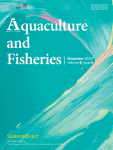Hi Guys ,
I hope you are fine. I am writing to request training and express the key and important points of saltwater clownfish breeding at the highest quality and genetic level, like your company's products. As a marine life enthusiast and semi-professional in the field, I understand the importance of maintaining the highest standards in breeding practices to ensure the health and genetic diversity of the clownfish population.
I am a household clownfish breeder in Iran, looking to expand my business and turn it into a business system with high production.
But due to the fact that I have not had access to good and reliable sources, I have encountered problems in this way, which I will explain to you further, and I ask for your help, guidance and training.
These problems and cases include the lowering of the quality of the fish in terms of fins, gills, color and pattern, and such things.
Although generators are very high quality
I believe that your expertise and knowledge in this field will be very useful for me in achieving my interests and goals. I am committed to maintaining the highest standards in breeding practices and am eager to learn from industry leaders like you.
In your training and the key breeding tips that I need so much, I am particularly interested in understanding the key points and best practices in saltwater clownfish breeding so that I can ensure very high quality, genetic diversity. and their overall health including fins, gills, color, etc.
I am also interested in learning about any new advances or developments in breeding techniques that could further improve the quality of my breeding program.
I am sure that your guidance and training will greatly contribute to the success of my breeding program.
Please, if possible, guide me in this field
I look forward to the opportunity to discuss this further with you. Thank you for considering my request
Sincerely, Mohammad
I hope you are fine. I am writing to request training and express the key and important points of saltwater clownfish breeding at the highest quality and genetic level, like your company's products. As a marine life enthusiast and semi-professional in the field, I understand the importance of maintaining the highest standards in breeding practices to ensure the health and genetic diversity of the clownfish population.
I am a household clownfish breeder in Iran, looking to expand my business and turn it into a business system with high production.
But due to the fact that I have not had access to good and reliable sources, I have encountered problems in this way, which I will explain to you further, and I ask for your help, guidance and training.
These problems and cases include the lowering of the quality of the fish in terms of fins, gills, color and pattern, and such things.
Although generators are very high quality
I believe that your expertise and knowledge in this field will be very useful for me in achieving my interests and goals. I am committed to maintaining the highest standards in breeding practices and am eager to learn from industry leaders like you.
In your training and the key breeding tips that I need so much, I am particularly interested in understanding the key points and best practices in saltwater clownfish breeding so that I can ensure very high quality, genetic diversity. and their overall health including fins, gills, color, etc.
I am also interested in learning about any new advances or developments in breeding techniques that could further improve the quality of my breeding program.
I am sure that your guidance and training will greatly contribute to the success of my breeding program.
Please, if possible, guide me in this field
I look forward to the opportunity to discuss this further with you. Thank you for considering my request
Sincerely, Mohammad



















